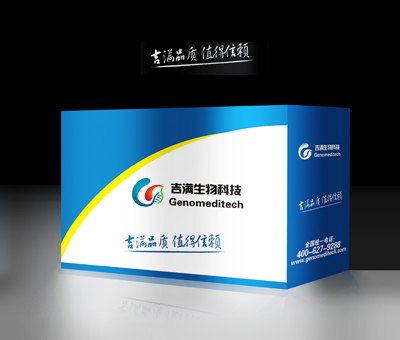产品编号:GM-87752MAB
产品名称:Anti-mouse CTLA4 mIgG2b Antibody(9D9)
目录价:询价

产品编号:GM-87752MAB
产品名称:Anti-mouse CTLA4 mIgG2b Antibody(9D9)
目录价:询价

GM-87752MAB-1mg 1mg
GM-87752MAB-5mg 5mg
GM-87752MAB-25mg 25mg
GM-87752MAB-50mg 50mg
GM-87752MAB-100mg 100mg
Expression System CHO
Aggregation < 5% as determined by SEC-HPLC
Purity > 95% as determined by SDS-PAGE
Endotoxin < 1 EU/mg, determined by LAL gel clotting assay
Sterility 0.2 μm Filtered
Target CLTA4
Clone 9D9
Alternative Names ALPS5, CD, CD152, CELIAC3, CTLA4, GRD4, GSE, IDDM12
Source/Isotype Monoclonal Mouse mIgG2b, κ
Description CTLA-4 or CTLA4 (cytotoxic T-lymphocyte-associated protein 4), also known as CD152 (cluster of differentiation 152), is a protein receptor that functions as an immune checkpoint and downregulates immune responses. CTLA-4 is constitutively expressed in regulatory T cells but only upregulated in conventional T cells after activation – a phenomenon which is particularly notable in cancers. It acts as an "off" switch when bound to CD80 or CD86 on the surface of antigen-presenting cells. CTLA-4 is a member of the immunoglobulin superfamily that is expressed by activated T cells and transmits an inhibitory signal to T cells. CTLA-4 is homologous to the T-cell co-stimulatory protein, CD28, and both molecules bind to CD80 and CD86, also called B7-1 and B7-2 respectively, on antigen-presenting cells. CTLA-4 binds CD80 and CD86 with greater affinity and avidity than CD28 thus enabling it to outcompete CD28 for its ligands. CTLA-4 transmits an inhibitory signal to T cells, whereas CD28 transmits a stimulatory signal. CTLA-4 is also found in regulatory T cells (Tregs) and contributes to their inhibitory function. T cell activation through the T cell receptor and CD28 leads to increased expression of CTLA-4.
Formulation Phosphate-buffered solution, pH 7.2.




产品编号:GM-87752MAB
产品名称:Anti-mouse CTLA4 mIgG2b Antibody(9D9)
目录价:询价

GM-87752MAB-1mg 1mg
GM-87752MAB-5mg 5mg
GM-87752MAB-25mg 25mg
GM-87752MAB-50mg 50mg
GM-87752MAB-100mg 100mg
Expression System CHO
Aggregation < 5% as determined by SEC-HPLC
Purity > 95% as determined by SDS-PAGE
Endotoxin < 1 EU/mg, determined by LAL gel clotting assay
Sterility 0.2 μm Filtered
Target CLTA4
Clone 9D9
Alternative Names ALPS5, CD, CD152, CELIAC3, CTLA4, GRD4, GSE, IDDM12
Source/Isotype Monoclonal Mouse mIgG2b, κ
Description CTLA-4 or CTLA4 (cytotoxic T-lymphocyte-associated protein 4), also known as CD152 (cluster of differentiation 152), is a protein receptor that functions as an immune checkpoint and downregulates immune responses. CTLA-4 is constitutively expressed in regulatory T cells but only upregulated in conventional T cells after activation – a phenomenon which is particularly notable in cancers. It acts as an "off" switch when bound to CD80 or CD86 on the surface of antigen-presenting cells. CTLA-4 is a member of the immunoglobulin superfamily that is expressed by activated T cells and transmits an inhibitory signal to T cells. CTLA-4 is homologous to the T-cell co-stimulatory protein, CD28, and both molecules bind to CD80 and CD86, also called B7-1 and B7-2 respectively, on antigen-presenting cells. CTLA-4 binds CD80 and CD86 with greater affinity and avidity than CD28 thus enabling it to outcompete CD28 for its ligands. CTLA-4 transmits an inhibitory signal to T cells, whereas CD28 transmits a stimulatory signal. CTLA-4 is also found in regulatory T cells (Tregs) and contributes to their inhibitory function. T cell activation through the T cell receptor and CD28 leads to increased expression of CTLA-4.
Formulation Phosphate-buffered solution, pH 7.2.



